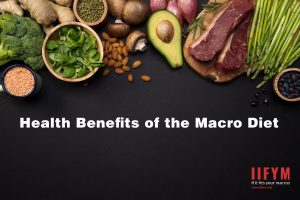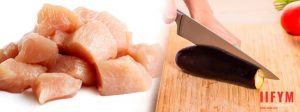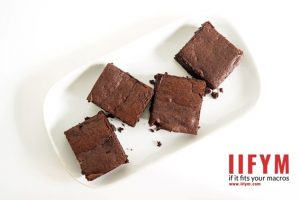Macro Diet and Exercise: What You Need to Know
If you are reading this, chances are that you are either about to start the macro diet to lose weight and get healthy, or already began and have some questions how it plays out when it comes to exercising and other physical activities.
Either way, good!
As we have stated before, macro dieting is simply the most reliable, science-based method to lose weight and get in shape.
The thing is that due to decades of misconceptions and misinformation about nutrition and exercise regimes to lose weight, most of the info out there is geared towards addressing the former while leaving the latter sitting in a blind-spot for the most part.
There isn’t nearly enough clear information on how these two things interact with each other. Especially if we consider how wildly successful the macro diet is proving to be.
I want to start remedying that.
In this piece, I’m going to quickly go over the basics of how – and why – the macro diet works so well. Then, I will address a few common queries I get from people relating to this dieting method and physical training.
So, here’s Macro Diet and Exercise: What You Need to Know!
How does the Macro Diet work?
It’s difficult to understand why the macro diet works so well if you don’t have a clear picture of what macros actually are. So, let’s start with a quick overview of what macros are, and how they work.
“Macro” is short for macronutrients, which is a term we use to classify the compounds that our body needs in large quantities to operate. In short, macronutrients are what we get our energy from.
The three primary macronutrients we receive from foods are protein, fats, and carbohydrates. Sometimes, alcohol gets cataloged as a macronutrient, but it is processed differently from the other three. Nonetheless, these components are where our calories come from, and they contain certain number of calories per gram.
Specifically:
- Carbs contain four calories per gram.
- Proteins contain four calories per gram.
- Fats contain nine calories per gram.
- Alcohol contains seven calories per gram.
The macro diet, then, is a nutrition method that accounts for your specific body needs and creates a plan to provide you a percentage of the macros you require – regardless of the type of food you use to get them – to keep your body constantly burning stored fat as fuel for energy.
A measurable, science-based, and incredibly effective approach to losing weight.
Can You Lose Weight just by eating right?
It’s one of the most common questions I hear on the topic. Particularly since traditional dieting usually proposes that you can’t lose weight without exercising. The old Cardio, cardio, cardio… mantra.
But the fact of the matter is that, yes! You can indeed lose weight just by eating right. It’s actually a pretty straightforward reasoning, once you understand how our bodies utilize food to function.
Nutritional science has figured out that if you just eat fewer calories than your body requires – accounting for activity level, energy needs, size, goals, etc. – while still getting an adequate supply of protein, carbs, fat, and fiber, you start losing weight at a relatively steady and predictable rate. This happens because your body has no choice but to tap into your energy storage (fat) and burn them to supplement itself.
Likewise, the main reason behind your weight gains usually come from your dietary habits. Too many calories result in more stored energy or fat.
So, as long as you follow a carefully planned nutritional system that keeps you in a calories deficit, you’ll lose weight. Regardless of your particular level of activity.
That being said, physically demanding activities like fitness training, weightlifting, and bodybuilding DO bring a host of health benefits with them and a general improvement to your daily life.
In such cases, the macro diet becomes even more of a boon, since it can help you attain the energy levels required to keep up with said increased physical activity, and reach your exercising goals even faster!
The Macro Diet Can Help You Lose Weight and Build Muscle
Like everything else in life, getting in shape or losing weight is all about knowing what your goals are, and what you need to do to achieve them. And in this topic, knowing when to transition from a fat loss-centric diet to a muscle growth one is vital.
Now, individual values are bound to vary since each person is different and have different requirements.
But the most straightforward advice I can give you, on the particular subject of finding the right transition point, is to take a look at where you stand in your weight loss process.
As a rule of thumb, this range sits around 10 to 15 lbs. above the previous ideal body weight for males and 8 to 12 lbs. above the previous ideal body weight for females.
Within these ranges, you don’t need to start counting macros to lose fat necessarily. You can instead adopt a macro diet that promotes muscle growth and strength to reap the benefits at the gym.
Any Macro Diet-Specific Advice for Training, Exercising, And Muscle Building?
Now, before you go, I’d like to talk a bit more about specific advice for those looking into the use of macro diets to help them with weight training and the like.
As you know by now, the success of a macro diet depends on you counting your macros correctly and using a formula designed specifically FOR YOU.
Just like creating a training regime, you can benefit a lot from tailoring your macronutrient ratios to go with your specific body type, exercising goals, and energy needs. However, that doesn’t mean there aren’t a few general guidelines you can use to get you started.
If you are using the macro diet to build muscle, a good macronutrient ratio breakdown to use is 40% carbs, 30% protein, and 30% fat. Entirely within the recommended parameters suggested by the national institute of health for active individuals.
However, keep in mind that although these ratios reflect your overall consumptions throughout the day, not all the meals should follow this spread within that day. As they should adapt to your energy needs to be processed optimally. Leave high-carbohydrate, low-fat meals for shortly after training, and leave adequate protein proportions with a bit of fiber for dinners.
If your goal is losing weight and getting in shape, the macro diet will work for you. Regardless of your physical activity – or lack thereof.
However, there are so many health benefits to exercising that it can be difficult not to recommend it. Especially, once you are enjoying the improved energy levels the macro diet is going to provide you consistently.
If you are getting into macro dieting and also enjoy exercising, this advice can help you reach your training goals more reliably and efficiently. Keep them in mind and use what suits you to make your “getting fit” experience much more enjoyable and productive.
The post Macro Diet and Exercise: What You Need to Know appeared first on IIFYM.
from IIFYM Recipes and Articles – IIFYM http://bit.ly/2NdEFBh



